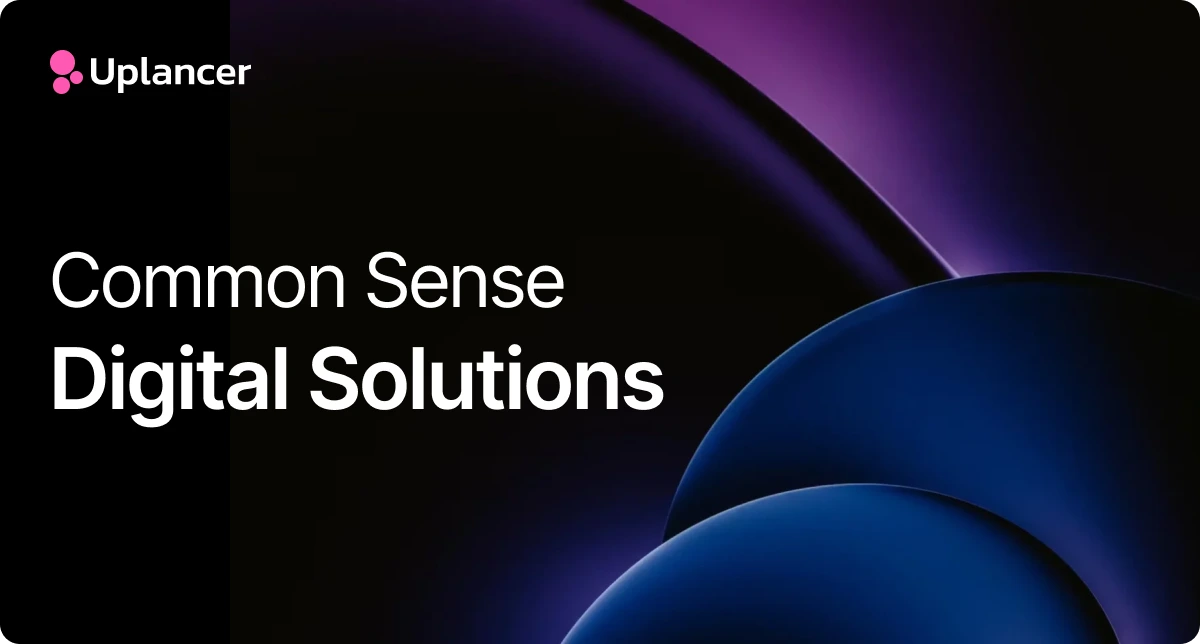Upsells, Downsells, and Cross Sells: Maximising Revenue at Every Stage of the Funnel

In the world of sales and marketing, the concept of a sales funnel is both a guiding principle and a strategic roadmap. It’s a framework that maps the customer journey, from the initial awareness stage to the final decision to purchase. Within this journey lie numerous opportunities to maximise revenue, and that’s where the power of upsells, downsells, and cross sells comes into play. In this comprehensive guide, we’ll delve into the intricacies of these techniques and how they can supercharge your revenue generation throughout the sales funnel.
The Importance of Maximising Revenue
Now, why is maximising revenue at different stages of the funnel so crucial? The answer lies in efficiency and profitability. It’s often more cost-effective to extract more value from existing customers than it is to acquire new ones. By strategically increasing the average transaction value of your existing customers, you not only boost your revenue but also increase your profit margins.
Upsells, Downsells, and Cross Sells
To achieve this goal, you need effective techniques. That’s where upsells, downsells, and cross sells come into play. These strategies are like the gears in a well-oiled revenue-maximising machine. They can help you increase the value of each customer transaction and foster long-term customer loyalty.
Understanding the Sales Funnel
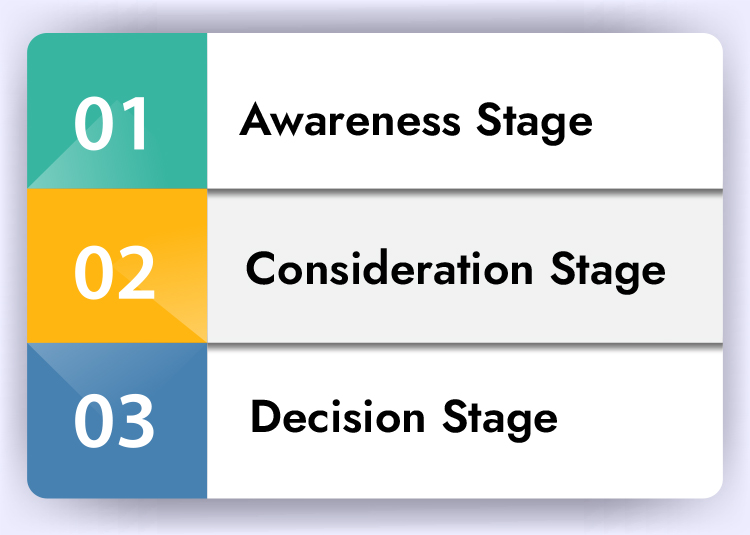
Before we dive into the strategies of upsells, downsells, and cross sells, let’s briefly explain the concept of a sales funnel. Imagine a funnel – wide at the top and narrow at the bottom. The ultimate goal of the funnel is to guide as many potential customers as possible through this funnel, converting them into paying customers.
A. Awareness Stage
The awareness stage is where your potential customers first become aware of your brand, product, or service. This is your chance to capture their attention and create interest. Effective marketing and advertising campaigns play a significant role in this stage, but so do strategic content marketing and social media engagement.
During this stage, your goal is to make a memorable first impression and provide enough value to keep potential customers engaged. Whether it’s through captivating blog posts, attention-grabbing social media posts, or informative videos, the key is to build awareness and curiosity.
B. Consideration Stage
In the consideration stage, potential customers are actively exploring their options. They’re looking for solutions to their problems or needs, and your job is to ensure your offering is top of mind. This is the prime time to nurture leads and present value.
Content like in-depth guides, comparison articles, and webinars can help potential customers understand the benefits of your product or service. You want them to see you as the trusted source they turn to for valuable insights.
C. Decision Stage
The decision stage is where the rubber meets the road. Here, potential customers have narrowed down their choices and are ready to make a purchase decision. This stage is critical because it’s where you convert leads into customers.
Your website’s product pages, customer reviews, and personalised recommendations play a significant role here. Potential customers are looking for that final nudge, the reassurance that they’re making the right choice. This is where your upsells, downsells, and cross sells can come into play, guiding them towards a more valuable purchase.
The Power of Upsells
Upselling is the art of encouraging customers to purchase a more expensive version of a product or to add premium features to their current purchase. It’s about offering an upgraded version or complementary product that enhances the value of their initial choice.
Imagine you’re buying a new smartphone. The salesperson suggests you consider the more advanced model with extra storage and a superior camera. That’s an upsell.
Benefits of Upselling
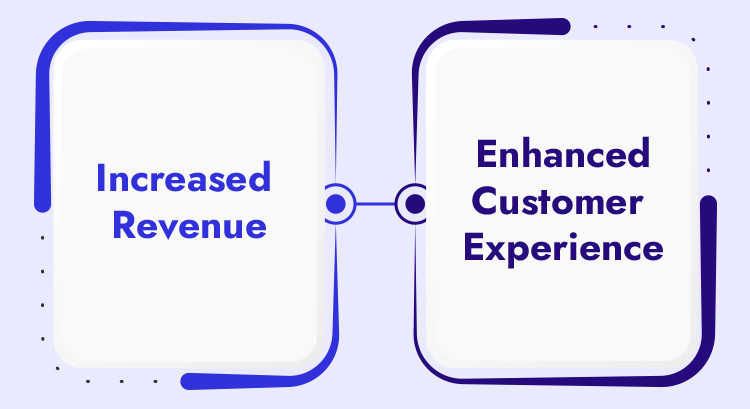
Upselling isn’t just about increasing the size of a sale; it’s about enhancing the customer’s experience. When done right, upselling can result in happier customers who feel they’ve made a smart choice. Here are some key benefits:
- Increased Revenue: The most obvious benefit of upselling is the potential for increased revenue without the need to acquire new customers. You’re simply extracting more value from existing ones.
- Enhanced Customer Experience: By offering a higher-value option that aligns with the customer’s needs and desires, you demonstrate that you’re attentive to their preferences, thereby improving their overall experience.
Effective Upselling Techniques
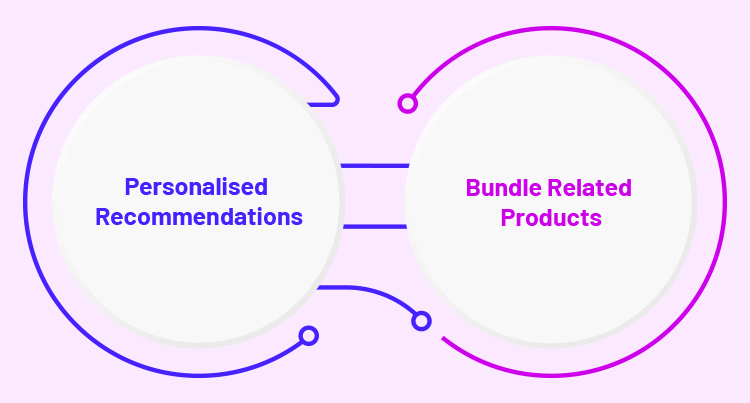
To make upselling work, consider these techniques:
- Personalised Recommendations: Use data and insights to offer upsells that align with the customer’s preferences and previous purchases. For example, if someone has bought a high-end camera, suggest a premium lens.
- Bundle Related Products: Create bundles that offer added value. For example, if someone is buying a laptop, offer a bundle with a discounted printer or software package.
The Strategy of Downsells
While upselling aims to persuade customers to spend more, downselling is about retaining potential customers who might otherwise abandon their purchase due to price concerns or objections. Downsells offer a more affordable or scaled-down alternative to the initial choice.
Consider a scenario where a customer is about to purchase a high-end fitness tracker but abandons the cart because of the price. Offering them a more basic model at a lower price is a smart downsell strategy.
Advantages of Downsells
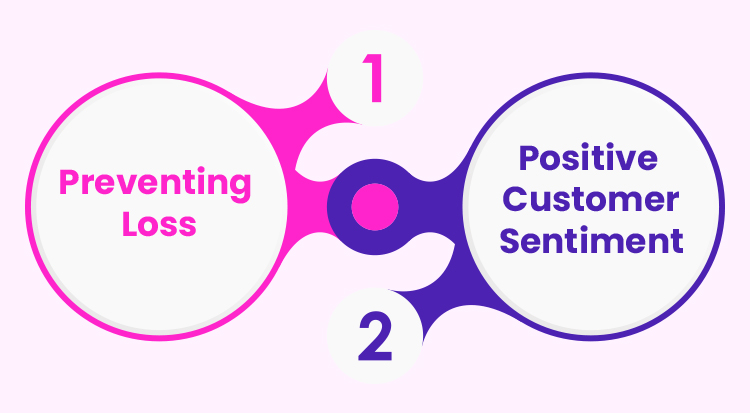
Downsells have their own set of advantages:
- Preventing Loss: The primary advantage is preventing the loss of a sale altogether. A customer who receives a well-tailored downsell offer may decide to proceed with the purchase rather than abandoning it.
- Positive Customer Sentiment: When you offer a downsell, you show empathy towards the customer’s budget or objections. This can result in a positive customer sentiment even if they don’t choose the initial product.
Implementing Successful Downsells

Here are some tactics for successful downselling:
- Offer a More Affordable Option: When a customer hesitates due to price, present them with a more affordable alternative that still meets their needs. Be clear about the value this option provides.
- Empathy and Understanding: Use customer feedback and objections to understand why they didn’t proceed with the initial purchase. Address their concerns in your downsell offer.
The Art of Cross Sells
Cross selling involves suggesting related products that complement the customer’s original purchase. It’s about expanding the customer’s order by offering items that make sense alongside their primary choice.
Think about ordering a laptop online and seeing a recommendation for a laptop bag, a wireless mouse, and a software suite. These are cross sell suggestions.
Cross Selling Benefits
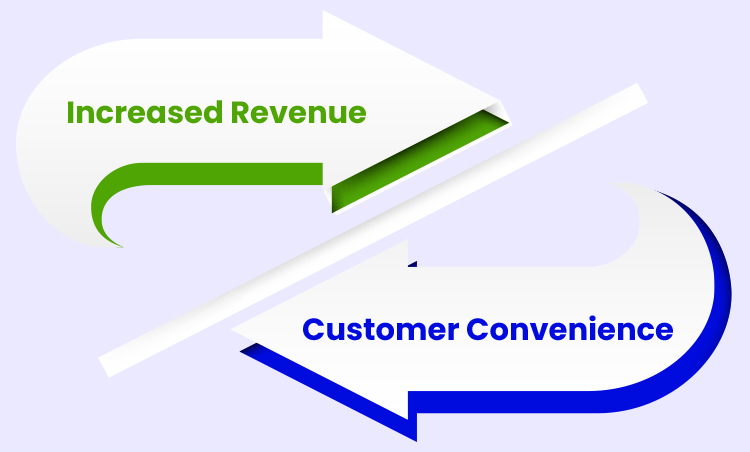
Cross selling offers several advantages:
- Increased Revenue: Cross selling can significantly boost your revenue without the need for additional marketing efforts. You’re maximising the value of each transaction.
- Customer Convenience: Customers appreciate the convenience of finding complementary items in one place. It saves them time and effort.
Cross Selling Techniques
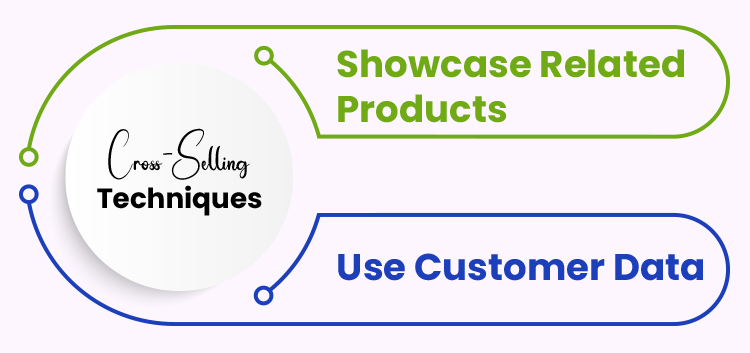
To master the art of cross selling:
- Showcase Related Products: Display related products on product pages, making it easy for customers to add them to their cart. For example, if someone is buying a blender, show them compatible accessories like extra jars or specialised blades.
- Use Customer Data: Leverage customer data to make relevant cross sell suggestions. If a customer frequently purchases athletic gear, offering them sports supplements during the checkout process can be a winning move.
Maximising Revenue with a Holistic Approach
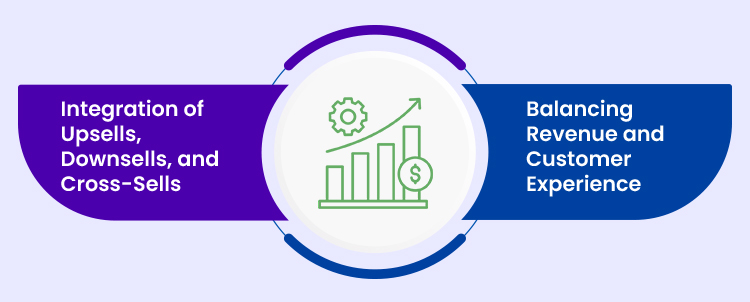
When it comes to revenue generation, integrating upsells, downsells, and cross sells into a comprehensive strategy can make all the difference. Let’s delve deeper into the concept of maximising revenue with this holistic approach.
Integration of Upsells, Downsells, and Cross Sells
While each of these strategies—upsells, downsells, and cross sells—can be powerful on its own, the true magic happens when you integrate them into a holistic approach. When you effectively combine these techniques, you create a comprehensive strategy that maximises revenue at every stage of the sales funnel.
For example, during the awareness stage, you might use cross sells to introduce related products that catch the audience’s attention. In the consideration stage, upsells can provide additional value, and during the decision stage, downsells can rescue potential customers on the verge of abandonment.
Balancing Revenue and Customer Experience
While the goal is to maximise revenue, it’s crucial to strike a balance between revenue generation and maintaining a positive customer experience. Trust and satisfaction are the cornerstones of long-term customer relationships.
Transparency in pricing, clear communication about upsells, downsells, and cross sells, and always keeping the customer’s best interests in mind are essential. An annoyed or deceived customer is unlikely to return, even if they make an initial purchase.
Case Studies and Real-World Examples
Let’s take a look at some real-world examples of companies that have successfully implemented upsells, downsells, and cross sells to maximise their revenue:
1. Amazon
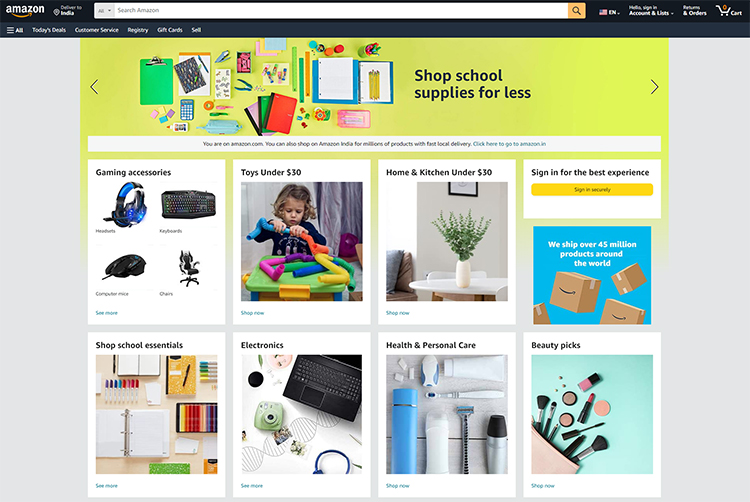
Amazon is a master of cross selling. When you browse for a product, you’ll often see a section labelled “Frequently bought together” or “Customers who bought this also bought.” These recommendations encourage customers to add more items to their cart, boosting Amazon’s average order value.
2. Spotify
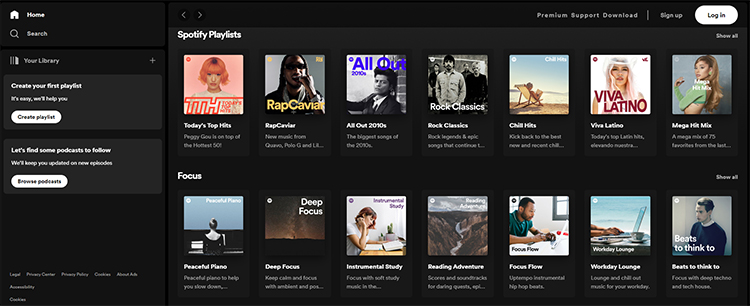
Spotify offers a well-executed upsell. While they have a free tier of their music streaming service, they regularly promote their premium subscription. They entice users with features like ad-free listening, offline downloads, and higher sound quality.
3. Apple

Apple’s downselling strategy is evident in its product lineup. When they release a new iPhone, they often continue selling older models at lower prices. This appeals to budget-conscious customers who still want an Apple device.
Highlight Techniques and Results
These companies have not only implemented these strategies effectively but have also seen remarkable results:
- Amazon’s cross selling efforts have contributed significantly to its massive revenue growth. They reported a net sales increase of 38% in 2020 compared to the previous year.
- Spotify’s upselling approach has led to a substantial increase in their premium subscriber base. As of 2021, they had over 155 million premium subscribers worldwide.
- Apple’s downselling of older iPhone models has consistently contributed to their market share. In 2020, they held a 15.9% share of the global smartphone market.
Conclusion
In today’s highly competitive business landscape, maximising revenue at every stage of the sales funnel is not just a strategy; it’s a necessity. Upsells, downsells, and cross sells offer a proven and effective way to achieve this goal. These techniques empower businesses to extract more value from existing customers, boost revenue, and foster long-term loyalty.
As you implement these strategies, remember the importance of a customer-centric approach. It’s not just about revenue; it’s about creating exceptional customer experiences that keep customers coming back for more. By integrating these techniques and maintaining transparency and trust, you can achieve sustained business growth while delighting your customers along the way. So, start exploring the power of upsells, downsells, and cross sells today and watch your revenue soar.
